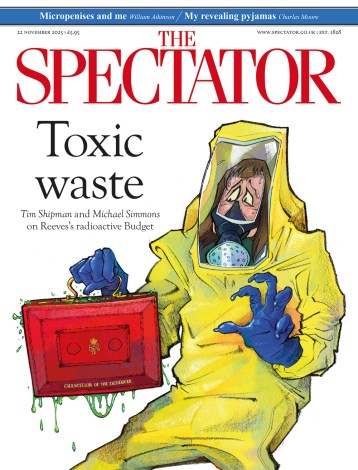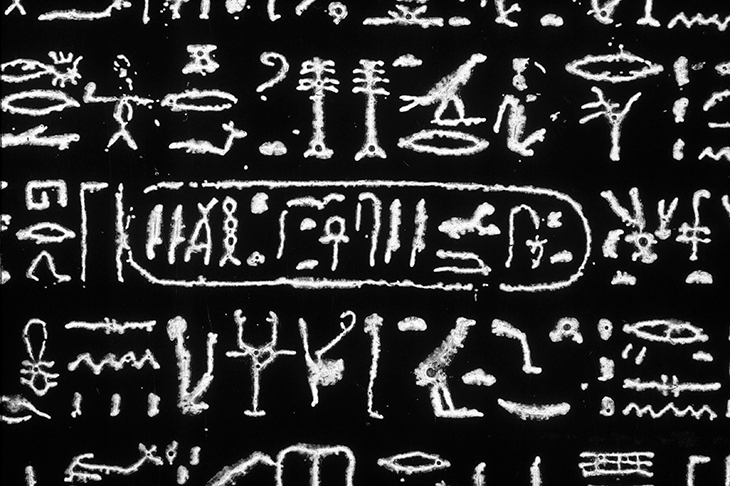The Rosetta Stone is the icon of decipherment. As one of the most popular objects in the British Museum, its irregular shape and the once white-on-black of its three scripts — hieroglyphic, demotic, Greek — are distinctive enough to sell countless socks, keyrings and nail files in the museum shop. The stone’s marketable popularity testifies both to the allure of hieroglyphs, including a persistent orientalising idea of their ‘mystery’, and the seemingly miraculous achievement of code-breaking. The latter is most associated with the two men of The Riddle of the Rosetta’s subtitle: the ‘English polymath’ Thomas Young (1773-1829) and the ‘French polyglot’ Jean-François Champollion (1790-1832). Theirs is a story much told and much mythologised. Champollion especially has become a romantic, tragic hero whose epiphany was ‘so powerful he fainted dead away’.
One of my students, when he saw The Riddle on my desk, huffed ‘not another book on decipherment?’ I confess I initially felt the same. However, this book is different. Not only is it arguably the most meticulous and thoroughgoing account of the work of Young and Champollion, it incorporates unpublished manuscripts, including many early drafts. The result is ‘a study in contrasts’, examining in detail ‘the separate developmental arcs of their ideas’. Through their painstaking examination of these documents, which required mastery of complex archives in multiple ancient and modern scripts and languages, the authors do much to unpack the mythologies as well.
The decipherment is often told as a tale of theft and competition, with strong nationalist overtones. The stone’s rediscovery was a by-product of conflict; it was found by a French officer in 1799 at the Nile port of el-Rashid (ancient Rosetta) as the local fort was being reinforced against incoming British forces. It was later confiscated as ‘a proud trophy of the arms of Britain’, hence its current place in the British Museum. Champollion’s decipherment has been cast as a particular triumph in this context. But, as told here, conflict between Young and Champollion did not arise from power struggles between Britain and France: ‘Their concerns were narrower and more local’, with differences in character at the heart.
Champollion has become a romantic, tragic hero whose epiphany was ‘so powerful he fainted dead away’
The book does not begin, as might be expected, with the discovery of the stone, but rather some four years later, at a dinner party in London at which Young, already known for his work on the wave theory of light, was a guest. So much in this first chapter sets the tone of the book. As we learn about the different men at the table, key intellectual preoccupations of the time emerge — from the relationships between written and oral traditions in the study of ancient texts, the relevance of antiquity to the modern world, to Scottish nationalism — all of which continue to resonate today.
The book consistently brings the influence of pervasive academic, political and personal contexts to bear on the stories, for example through Champollion’s activism or the emphasis on Young’s Quaker upbringing, which he just could not shake despite himself. Young ‘did not expect to discover much worthwhile in the written remnants of Egyptian antiquity’, in his own words ‘among the monuments of so foolish and so frivolous a nation’.
A more sympathetic portrait of Champollion is painted, derived from his desire to ‘open a window onto an attractive world, peopled by individuals whose lives he admired and whose beliefs he respected’. Yet, despite this, the book is an account of European intellectual history. The ancient Egyptian language is the puzzle and there are only fleeting glimpses of its place and people.
The expatriate Egyptian community Champollion was so involved with in Paris is briefly acknowledged, especially his Coptic teachers Yuhanna Chiftichi and Rufa’il Zakhûr (known in France as Raphaël de Monachis or Dom Raphaël). Champollion saw Coptic, the final phase of the Egyptian language and liturgical language of the Coptic church, as his ‘time-travel mechanism’. But little is said about this community or these men, in contrast to, for example, Champollion’s teacher, then rival, Silvestre de Sacy. It may be simply that less is known about these relationships, but it left me wanting more.
The dazzling scholarly nimbleness of Champollion and Young is richly illustrated throughout the book — that is no myth, but it emerges as something a little more human. While preparing his Coptic dictionaries, Champollion kept pages on the left blank for expansions and redactions as he worked up his entries on the right: ‘In other words, he planned to be surprised.’ Unfinished drafts, partially expressed ideas, corrections and deletions, all these are familiar to any academic, any creative, and they ‘complicate the tidy story of Champollion’s achievement as it has been told for the past century’.
Something similar is captured for Young, for example in documents in which he literally cut and pasted lines of demotic from copies of the Rosetta Stone to test correspondences with the Greek. Seeing work in progress does not detract from their prodigious genius; rather, it becomes somewhat more accessible to those of us who do not share it.
Predictably, the book culminates in that ‘stunning reversal’ when Champollion became convinced that hieroglyphs were significantly phonetic. When I now read a love poem inked on papyrus, a grumpy letter of rebuke scrawled across a fragment of limestone or the name of a scribe graffitied on a temple wall, I take my ability a little less for granted. How lucky am I to be offered this window? Yes, it perhaps originates in theft and competition, but also mutual curiosity and collaborative relationships and interactions. In such a fractious world, it is good to be reminded of that.






Comments